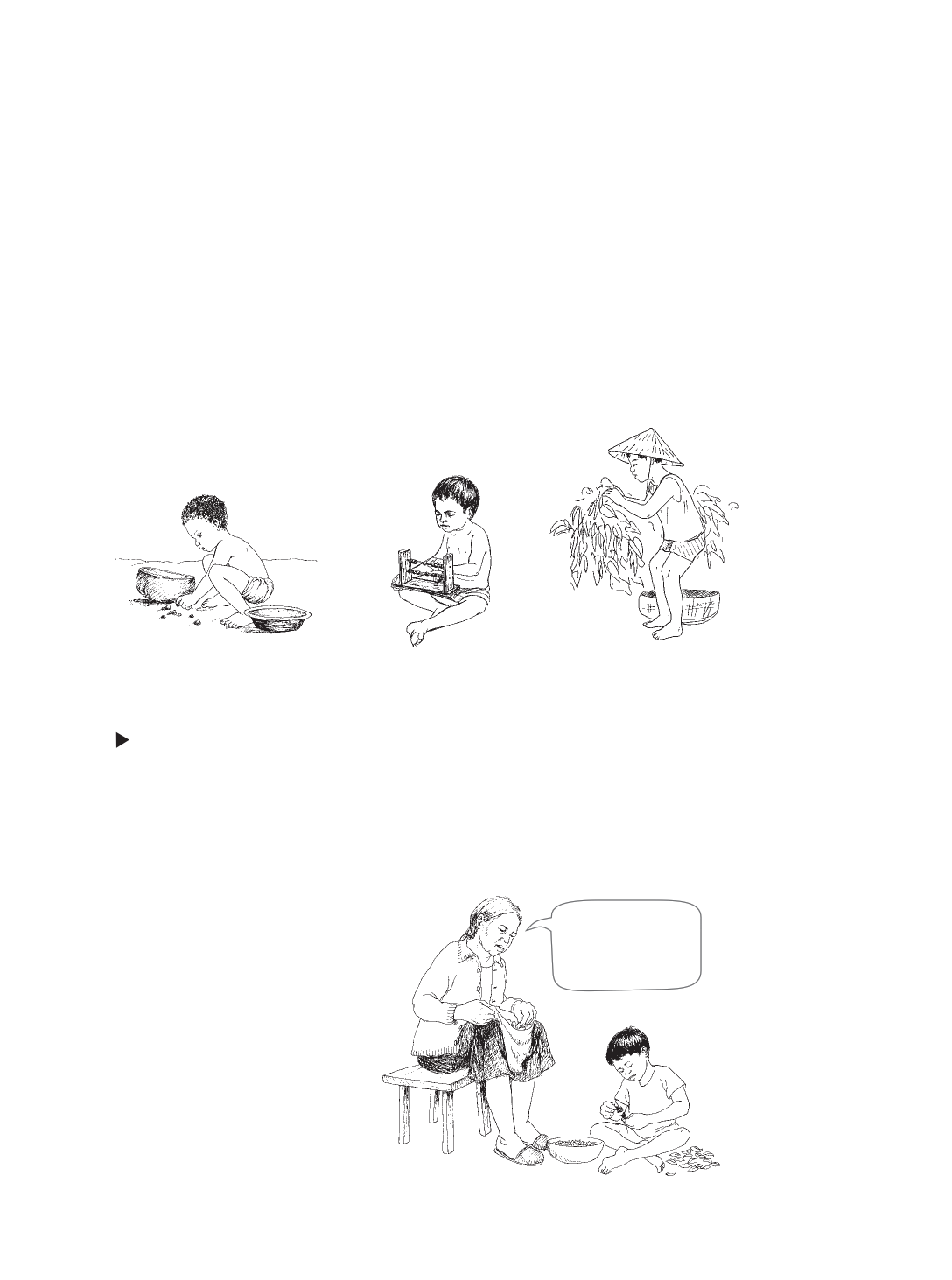
98 m o v e m e n t
Hand and finger skills
All children develop hand and finger skills, but these skills are harder
to learn for children who cannot see. A child who cannot see well must
learn to control his fingers, hands and arms because he depends so
much on them to give him information about the world. These skills are
also important when he learns to read Braille (see page 139).
Children who cannot see well may not be as active as other children.
Encourage your child to participate in the everyday activities that will
help him develop:
• strength and flexibility in his hands and fingers
• the ability to feel small and fine details and shapes
with his fingers
as a young child
older and
at school
beginning to
learn a trade
To help your child develop strength and flexibility in his
hands and fingers
Give your child tasks or make up games in which he uses his finger
muscles — for example, rolling balls of mud or clay, kneading bread
dough, shelling peas, or squeezing oranges.
Give your child tasks or
make up games in which he
breaks or tears things — like
grass, leaves, corn husks, or
shells — into little pieces.
Now we have
enough stuffing
for the pillow,
Pierre.
helping children who are blind